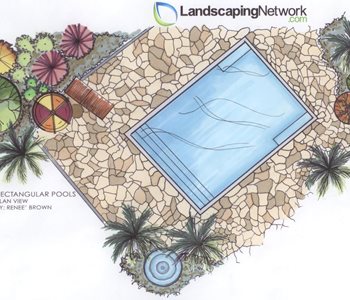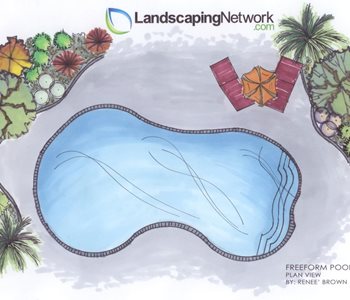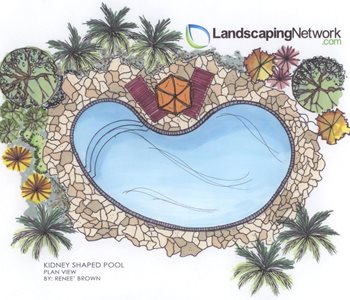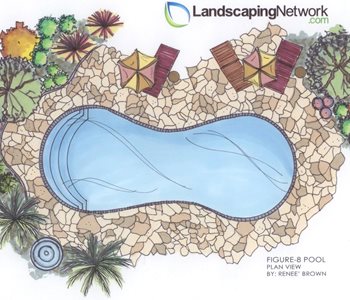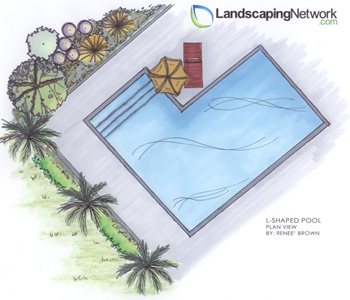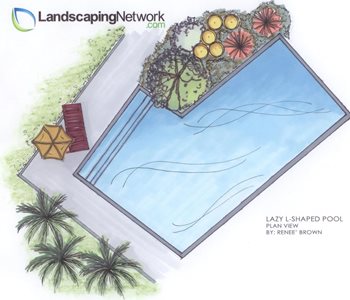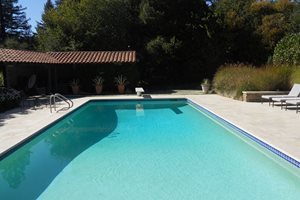Swimming Pool Shape
How to choose the best pool shapeOne of the big decisions in swimming pool design is choosing the shape of your pool. There are so many ways your pool can be shaped, so it's helpful to have an idea of popular shapes and classic shapes. Once you know the parameters of how large your pool can be (see more at: swimming pool placement), you'll find you can accommodate nearly any design.
Certain shapes lend themselves better to complementing surrounding landscape or structures. When a pool is placed close to the home, it should complement the home's architecture. These types of pools usually have more formal lines, such as a rectangular or oval shape that fit in with the home's silhouette. Whereas pools that are placed farther out in the yard can take on a freeform shape that looks more natural and blends with the landscaping.
Here are common pool shapes:
Rectangular Pools
Geometrically shaped pools are typically more formal in nature. The straight edges of geometric pool shapes are what give them the formal design. The rectangle was one of the most common shapes in early pool design. Its long, straight and narrow design is ideal for swimming laps. A rectangle with rounded corners is also a popular design that tends to tone down the formality.
Freeform Pool
A freeform pool can take on virtually any curvilinear shape (except circles or other rounded geometric patterns). Many times, a kidney-shaped pool is considered free-form. However, the kidney shape has become more standard over the years. A truly free-form design does not adhere to any typical pool design patterns. It is typically designed around elements in nature or to blend with nature. It also is chosen for incorporating landscaping elements such as providing inlets into the pool area for palm trees or shrubbery.
Kidney Shaped Pool
This kidney shaped pool is similar to a long oval with an indentation on one side. It is a popular choice because it is conducive to nearly any size of backyard space. Without the crisp lines of a geometric-type pool, the kidney-shape tends to look more natural. It also provides natural placement of a shallow end and a deep end for swimmers. To add to the kidney-shape design, some homeowners place a spa in the indented area or shrubbery and greenery.
Figure-8 Pool
Figure-8 shaped pools are great for families or those who want a pool to work for many activities. One end of a figure-8 pool does not necessarily have to be a mirror image in size of the other end. The figure-8 provides a nice separation for an obvious shallow area and a separate deeper area. For families, young children can enjoy activities in the shallow area with obvious perception of where the deeper area begins. The indentations on each side of the figure-8 are also natural spots for shrubbery.
L-Shaped Pool
The l-shaped pool was a natural extension of the typical rectangular pool. This type of pool shape is great for those who like to exercise or train by swimming laps, while still providing a smaller shallow-end area for young swimmers.

 Backyards
Backyards
 Front Yards
Front Yards
